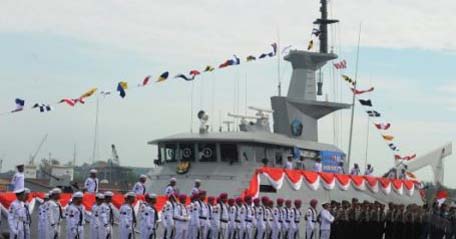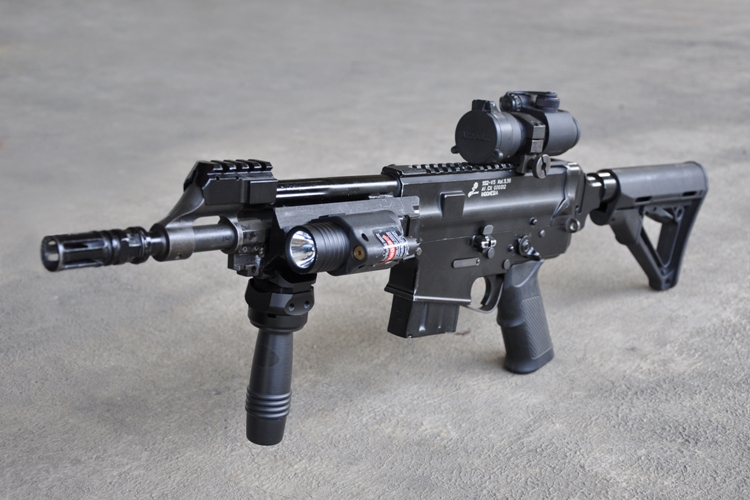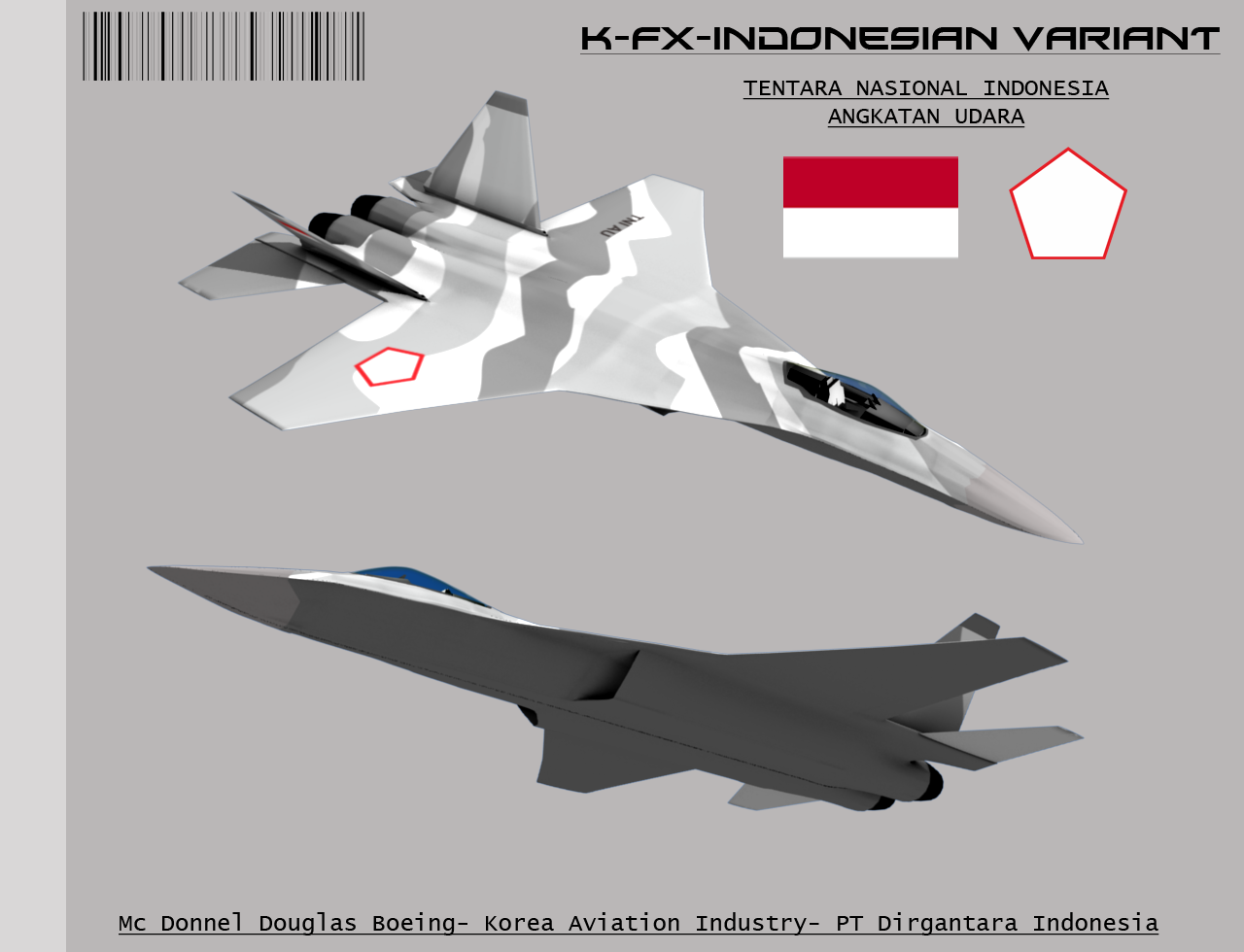The future of the national defense industry
Harry Kuffal, Jakarta | Opinion | Mon, January 28 2013, 10:25 AM
Two important events related to the defense industry marked the beginning of 2013. The first was the Centre for Strategic and International Studies (CSIS) report on defense market trends in Europe and the second was the US Congress approval of the federal budget for 2013.
CSIS reported a defense spending decline in 37 European countries from ¤263.1 billion (US$352 billion) in 2001 to ¤220.0 billion in 2011. But the budget per soldier increased from ¤76,700 in 2001 to ¤100,800 in 2011.
The second event came on Jan. 1, when the US Congress compromised and approved a budget worth $3,800 billion. It includes a $672 billion defense budget, of which $613 billion can be directly spent (nondiscretionary) and “only” about $216 billion is for procurement. It is easy to predict that both developments will result in an influx of offers of US and European defense industrial products to Indonesia.
Coincidentally, in October 2012 the House of Representatives endorsed the Defense Industry Law, constituting the most historic landmark since premier Juanda introduced the archipelagic concept by the end of the 1950s as the basis for Indonesia’s defense industry development.
Only in 1980 did the government form a Defense Industry Development Team (TPIH) to study and recommend several companies and institutions categorized as strategic and defense industries, which were later managed by the Strategic Industries Management Agency (BPIS). Ten of the state-owned enterprises, including aircraft maker IPTN, ship builder PT PAL Indonesia, weapons maker PT Pindad, explosives manufacturer Dahana and steel producer Krakatau Steel (KS) put in good performances in terms of liquidity and solvency even after the 1997 Asian financial crisis. When consolidated in the BPIS, their profitability ratio increased.
Their situation was undermined when the International Monetary Fund (IMF) demanded suspension of aid as well as programs for Indonesia’s aeronautic and maritime technological development and the government’s strategic industrial procurement. In 2002 PT BPIS was dissolved.
After 10 years of confusion, some of the companies have reawakened and recovered such as Dahana and Pindad. Others like train car maker PT INKA have started making profits and KS has become a listed company with the potential to grow into a giant iron and steel holding company.
It should be admitted, however, that the strategic and defense industries have been stagnant and lacking orientation. It is almost certain they will remain unable to support self-sufficiency in defense, particularly in meeting the need for primary weaponry systems.
As for their supporting industries, Indonesia seems to be already independent and capable. Various initiatives have been made to revitalize these industries. Yet the intricacy of developing healthy strategic and defense industries is seen from two main points of view.
In the first place, the demand side, where the government serves as a single consumer, in effect a monopsony. Various problems arising such as limited budget allocations, complicated bureaucratic mechanisms and low confidence of users in national industrial products have weakened the country’s defense industry.
A decision by the Indonesian Military (TNI) and National Police (Polri) to use domestically produced weapons and the Defense Industry Law should constitute the main asset to synchronize measures with the national defense industry to achieve strong state defense capabilities.
On the other hand is the supply side. The national defense industry is generally unsound in financial and managerial terms and is less competitive than its foreign competitors.
The US teaches us a lesson. In the early Cold War period of the 1950s, the US was “surprised” by the Soviet Union’s successful launch of the first manmade satellite, Sputnik. The US was harder hit when the Soviet Union sent a dog, Laika, into space and later cosmonaut Yuri Gagarin made the first manned space flight.
The spirit to keep abreast of the latest advances was voiced by then president Kennedy, who unified his nation with a campaign to land the first man on the moon. Consequently, all the existing resources were mobilized in a highly focused and integrated way.
The US defense industry soon had advanced technological applications for its army, naval and air forces because research and development costs were borne by the national moon-landing program. The US government also granted contracts to its defense industry to develop future fighter aircraft by utilizing Apollo program technology.
Obviously, the US defense industry enjoys indirect subsidies. All the facilities related to R&D and production become government property, so that they were not listed as assets and imposed no corporate burden. Such subsidies and facilities certainly are beyond comparison with Indonesia, which dissolved the BPIS in 2002 so that the relevant companies have had to bear R&D costs for a relatively limited market.
Lessons on government commitments to successful defense industry development can be learned from China, Brazil, South Korea and Turkey. Even more extreme forms and patterns involve the defense industry development of Israel and Singapore because they have the perception of threats or embargos by surrounding countries.
On Dec. 9, 2009, President Susilo Bambang Yudhoyono called for defense industry efficiency and revitalization with the aim of creating defense and security with a minimum essential force; an increase in the defense budget in correlation with the GDP and with reference to future warfare, doctrines and geographic conditions; the ability to perform multi-role tasks by preparing for military operations other than war; and to make designation according to necessity and interoperability.
With a clear legal umbrella and presidential direction, the Defense Ministry is expected to be able to coordinate the procurement of primary weaponry systems and the development of the national defense industry. The goals can be realized through a focus of activity declared as a National Program, which should constitute a consensus and be formulated by an official institution: the Committee on Defense Industry Policy (KKIP).
In the short (five-year) term, the government can utilize the defense industry’s production capacity and capability through offset mechanisms like countertrade, joint production and measured transfers of technology. In the medium term, the TNI and Polri as users should provide input and evaluate the products being developed according to their needs. In the long term, users and the defense industry should jointly study the necessity for new products based on the defense strategy and other elements already indicated by the President.
The National Program is certainly only one way of developing the defense industry and will depend greatly on studies of the potential and perception of threats faced by the military and police. The other move is strengthening the strategic industrial structure to improve financial and human resources performance, for which the sole option to be considered is industrial consolidation.
A feasible consolidation alternative involves industries more engaged in the production of primary weaponry systems like Pindad, Dahana, LEN, INTI and DI; for the formation of an aeronautic and defense holding company such as EADS in Europe. Meanwhile, PAL, DPS, IKI, BBI, Barata, DKB and INKA can combine to form a shipping and heavy industry holding company such as Hyundai Heavy Industries, now the largest in the world.
With the two new holding companies, supported by the KS holding industry specializing in iron and steel, a synergy would definitely be created in terms of the management and structural reinforcement of the defense industry in Indonesia.
Through the consolidation of R&D, allocations can be managed by integration (fund pooling) so as to reduce the load on relevant industries. Sound strategic industries are the main prerequisite for the development of an independent national defense industry and its strategic nature necessitates the government through the KKIP to guarantee its vitality. An independent defense industry is not merely meant for defense but also for public welfare.
The writer is president director of state-owned explosives producer PT Dahana. The opinions expressed are his own
The future of the national defense industry | The Jakarta Post



























